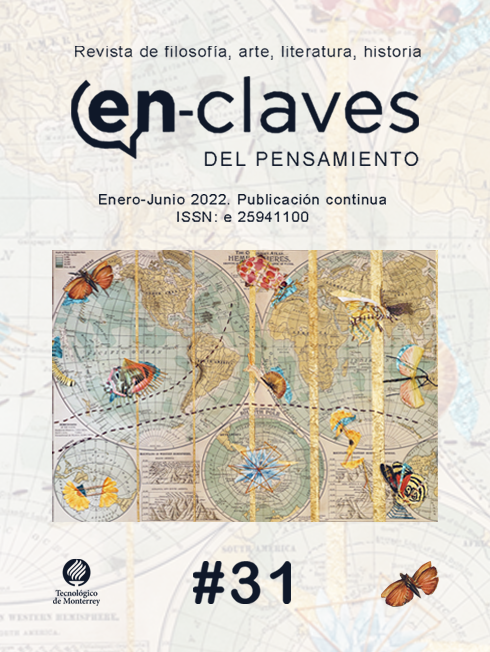Violencia virtual contra el colectivo LGBTIQ+: una revisión sistemática
Contenido principal del artículo
El presente trabajo muestra la vulnerabilidad del colectivo LGBTIQ+ a la hora de recibir agresiones a través de las nuevas tecnologías, en lo que se conoce como cyberbullyng, ciberacoso o violencia virtual, por no ajustarse a un perfil heteronormativo, observándose este tipo de agresiones también en instituciones educativas que muestran acciones y políticas basadas en estereotipos no inclusivos. La revisión se ha llevado a cabo mediante una búsqueda en diversas bases de datos científicas y un análisis siguiendo el manual de revisiones sistemáticas de Cochrane, en Higgins y Green y PRISMA. Se concluye que cyberbulliyng LGBTIQ+ fóbico muestra una prevalencia creciente en los últimos años, con importantes consecuencias socioemocionales y conductuales para el colectivo vulnerable, que hacen necesaria una intervención en materia de sensibilización y concienciación dentro los centros educativos.
Abreu, Roberto, y Maureen Kenny. “Cyberbullying and LGBTQ Youth: A Systematic Literature Review and Recommendations for Prevention and Intervention”. Journal of Child and Adolescent Trauma, núm. 11 (2018): 81-97. https://doi.org/10.1007/s40653-017-0175-7.
Agustín, Santiago. Diversidad sexual en las aulas. Evitar el bullying o acoso. Badajoz: Fundación Trián, 2009.
Benítez, Eduardo (coord.). Ciberbullying LGBT-fóbico. Nuevas formas de intolerancia. Madrid: Grupo de Educación de COGAM, 2016.
Blaya, Catherine, y Catherine Audrin. “Toward an Understanding of the Characteristics of Secondary School Cyberhate Perpetrators”. Frontiers in Education, núm. 4 (junio, 2019): 13-19. https://doi.org/10.3389/feduc.2019.00046
Botella, Juan, y Sánchez, Julio. Meta-análisis en ciencias sociales y de la salud. Madrid: Síntesis, 2015.
Bouris, Alida, Bethany Everett, Ryan Heath, Caitlin Elsaesser, y Torsten Neilands. “Effects of Victimization and Violence on Suicidal Ideation and Behaviors among Sexual Minority and Heterosexual Adolescents”. LGBT Health, núm. 3 (2016): 153-161. https://doi.org/10.1089/lgbt.2015.0037.
Buelga, Sofia, Begoña Iranzo, María Jesús Cava y Eva Torralba. “Psychological profile of adolescent cyberbullying aggressors / Perfil psicosocial de adolescentes agresores de cyberbullying”. Revista de Psicología Social, núm. 30 (2015): 382-406. https://doi.org/10.1080/21711976.2015.1016754.
Burton, Chad, Michael Marshal, Chisolm, Deena, Sucato, Gina y Friedman Mark. “Sexual minority-related victimization as a mediator of mental health disparities in sexual minority youth: A longitudinal analysis”. Journal of Youth and Adolescence, núm. 42 (2013): 394-402.
Camodeca, Marina, Roberto Baiocco y Ortensia Posa. “Homophobic bullying and victimization among adolescents: The role of prejudice, moral disengagement, and sexual orientation”. European Journal of Developmental Psychology, núm. 16 (2019): 503-521. https://doi.org/10.1080/17405629.2018.1466699.
Cifuentes, Francisca, Cristian Carrer y Javier Pascual. “Acoso escolar por orientación sexual, identidad y expresión de género en institutos de educación secundaria catalanes”. Revista Nacional e Internacional de Educación Inclusiva, núm. 13 (2020): 153-174.
Collier, Kate, van Beusekom Gabriël, Bos Henny y Sandfort Theo. “Sexual Orientation and Gender Identity/Expression Related Peer Victimization in Adolescence: A Systematic Review of Associated Psychosocial and Health Outcomes”. Journal of Sex Research, núm. 50 (2013): 299-317.
Cook, Clayton, Kirk Williams, Nancy Guerra, Tia Kim y Shelly Sadek. “Predictors of Bullying and Victimization in Childhood and Adolescence: A Meta-Analytic Investigation”. School Psychology Quarterly, núm. 25 (2010): 65-83.
Del Olmo, Margarita. “Prejuicios y estereotipos: un replanteamiento de su uso y utilidad como mecanismos sociales”. Revista de Educación XXI, núm. 7 (2005): 13-24.
Dermody, Sarah, Michael Marshal, Chad Burton y Deena Chisolm. “Risk of Heavy Drinking among Sexual Minority Adolescents: Indirect Pathways through Sexual Orientation-Related Victimization and Affiliation with Substance-using Peers”. Addiction, núm. 111 (2016): 1599-1606.
Desmet, Ann, Maddalena Rodelli, Michael Walrave, Gwendolyn Portzky, Eva Dumon y Bart Soenens. “The Moderating Role of Parenting Dimensions in the Association between Traditional or Cyberbullying Victimization and Mental Health among Adolescents of Different Sexual Orientation”. International Journal of Environmental Research and Public Health, núm. 18 (2021): 1-20.
Desmet, Anna, Maddalena Rodelli, Michael Walrave, Bart Soenens, Greet Cardon y Ilse de Bourdeaudhuij. “Cyberbullying and Traditional Bullying Involvement among Heterosexual and Non-Heterosexual Adolescents, and their Associations with Age and Gender”. Computers in Human Behavior, núm. 83 (2018): 254-261. https://doi.org/10.1016/j.chb.2018.02.010.
Donahue, Kelly, Niklas Långström, Sebastian Lundström, Paul Lichtenstein y Mats Forsman. “Familial Factors, Victimization, and Psychological Health Among Sexual Minority Adolescents in Sweden”. American Journal of Public Health, núm. 107 (2017): 322-328.
Dunn, Hailee, Melissa Clark y Deborah Pearlman. “The Relationship Between Sexual History, Bullying Victimization, and Poor Mental Health Outcomes Among Heterosexual and Sexual Minority High School Students: A Feminist Perspective”. Journal of Interpersonal Violence, núm. 32 (2017): 3497-3519.
Edwards, Katie, Kateryna Sylaska, Johanna Barry, Mary Moynihan, Victoria Banyard, Ellen Cohn, Wendy Walsh y Sally Ward. “Physical Dating Violence, Sexual Violence, and Unwanted Pursuit Victimization: A Comparison of Incidence Rates among Sexual-Minority and Heterosexual College Students”. Journal of Interpersonal Violence, núm. 30 (2015): 580-600. https://doi.org/10.1177/0886260514535260.
Elipe, Paz, María de la Oliva Muñoz y Rosario del Rey. “Homophobic Bullying and Cyberbullying: Study of a Silenced Problem”. Journal of Homosexuality, núm. 65 (2018): 672-686. https://doi.org/10.1080/00918369.2017.1333809.
Enguix, Begonya. “Activismo y prácticas digitales en la construcción de una esfera LGBTIQ+ en España”. Dados, núm. 59 (2016): 755-787. https://doi.org/10.1590/00115258201691.
Espelage, Dorothy, Kathleen Basile y Merle Hamburger. “Bullying Perpetration and Subsequent Sexual Violence Perpetration among Middle School Students”. Journal of Adolescent Health, núm. 50 (2012): 60-65.
Frost, David, y Ilan Meyer. “Internalized Homophobia and Relationship Quality Among Lesbians, Gay Men, and Bisexuals”. Journal of Counseling Psychology, núm. 56 (2009): 97-109. doi:10.1037/a0012844.
Garaigordobil, Maite, y Enara Larrain. “Bullying and Cyberbullying in LGBT Adolescents: Prevalence and Effects on Mental Health”. Comunicar, núm. 28 (2020): 77-87. https://doi.org/10.3916/C62-2020-07.
Garrido, Rocío, y Zaira Morales. “Una aproximación a la homofobia desde la Psicología”. Propuestas de Intervención Psicología, Conocimiento y Sociedad, núm. 4 (2014): 90-115.
Gegenfurtner, Andreas, y Markus Gebhardt. “Sexuality Education Including Lesbian, Gay, Bisexual, and Transgender (LGBT) Issues in Schools”. Educational Research Review, núm. 22 (septiembre, 2017): 215-222. https://doi.org/10.1016/j.edurev.2017.10.002.
Guasp, April. The School Report. The Experience of Gay Young People in Britain’s Schools in 2012. University of Cambridge: Centre for Family Research, 2012.
Hatzenbuehler, Mark, Dustin Duncan y Renee Johnson. “Neighborhood-level LGBT Hate Crimes and Bullying among Sexual Minority Youths: A Geospatial Analysis”. Violence and Victims, núm. 30 (2015): 663-675. https://doi.org/10.1891/0886-6708.VV-D-13-00166.
Higgins, Julian, y Sally Green. Cochrane Handbook for Systematic Reviews of Interventions Version 5.1.0. London: The Cochrane Collaboration, 2011.
Hinduja, Sameer, y Justin Patchin. Bullying, Cyberbullying and Sexual Orientation. Florida: Cyberbullying Research Center, 2011.
Kosciw, Joseph, Emily Greytak, Noreen Giga, Christian Villenas y David Danischewski. The 2015 National School Climate Survey: The Experiences Of Lesbian, Gay, Bisexual, Transgender, And Queer Youth In Our Nation’s Schools. New York: GLSEN, 2016.
Larrain, Enara, y Maite Garaigordobil. “El bullying en el País Vasco: Prevalencia y diferencias en función del sexo y la orientación-Sexual”. Clínica y Salud, núm. 31 (2020): 147-153.
Martxueta, Aitor, y Juan Etxeberria. “Claves para atender la diversidad afectivo-sexual en el contexto educativo desde un enfoque global escolar”. Revista Española de Orientación y Psicopedagogía, núm. 25 (2014): 121-128.
Mayock, Paula, Audrey Bryan, Nicola Carr y Karl Kitching. Supporting LGBT Lives: A Study of the Mental Health and Well-being of Lesbian. Gay, Bisexual and Transgender People. Dublin: National office of suicide prevention, GLEN and belong to youth service, 2009.
Mamédio da Costa Santos, Cristina, Cibele de Mattos Pimenta y Moacyr Cuce Nobre. “Estrategia pico para la construcción de la pregunta de investigación y la búsqueda de evidencias”. Revista Latino-Americana de Enfermagem, núm. 15, (2007): 2-4.
Meyer, Ilan. “Prejudice, Social Stress, and Mental Health in Lesbian, Gay, and Bisexual Populations: Conceptual Issues and Research Evidence”. Psychological Bulletin, núm. 129 (2003): 674-697.
Moher, David, Alessandro Liberati, Jennifer Tetzlaff, Douglas Altman y PRISMA, “Preferred Reporting Items for Systematic Reviews and MetaAnalyses: The PRISMA Statement”. PLoS Medicine, núm. 6 (2009): e1000097. https://doi.org/10.1371/journal.pmed.1000097.
Moreau, David, y Beau Gamble. Conducting a Meta-analysis in the Age of Open Science: Tools, Tips, and Practical Recommendations. Auckland: The University of Auckland, 2020.
Otis, Melanie, Carrie Oser y Staton Michele –Tindall. “Violent Victimization and Substance Dependency: Comparing Rural Incarcerated Heterosexual and Sexual Minority Women”. Journal of Social Work Practice in the Addictions, núm. 16 (2016): 176-201.
Parales-Quenza, Carlos, y Milcíades Vizcaíno-Gutiérrez. “Las relaciones entre actitudes y representaciones sociales: elementos para una integración conceptual”. Revista Latinoamericana de Psicología, núm. 39 (2007): 351-361.
Pichardo, José Ignacio. Abrazar la diversidad: propuestas para una educación libre de acoso homofóbico y transfóbico. Madrid: Instituto de la mujer y para la igualdad de oportunidades, 2015.
Ponzetti, James. Evidence-based Approaches to Sexuality Education. A Global Perspective. New York: Routledge, 2016.
Rankin, Susan, Genevieve Weber, Warren Blumenfeld y Frazer Somjen. State of Higher Education for Lesbian, Gay, Bisexual, and Transgender People: 2010 National College Climate Survey. Charlotte, NC: Campus Pride, 2010.
Ramsey, Jaimi, Lisabeth DiLalla y Megan McCrary. “Cyber Victimization and Depressive Symptoms in Sexual Minority College Students”. Journal of School Violence, núm. 15 (2016): 483-502.
Ruiz, Carmen. “Estrategias para educar en y para la igualdad: coeducar en los centros”. ATLÁNTICAS – Revista Internacional de Estudios Feministas, núm. 2 (2017): 166-191.
Socarrás, Delia, Massiel Nuñez, Martín del Río Marais, Ada Rodríguez y Gisett Gutiérrez. “Estudio exploratorio retrospectivo sobre violencia homofóbica y transfóbica en la trayectoria escolar de activistas cubanos LGBT”. Revista Sexología y Sociedad, núm. 25 (2019): 72-87.
Sterzing, Paul, Jun Sung Hong, Rachel Gartner y Wendy Auslander. “Child Maltreatment and Bullying Victimization among a Community-based Sample of Sexual Minority Youth: The Meditating role of Psychological Distress”. Journal of Child and Adolescent Trauma, núm. 9 (2016): 283-293.
Sticca, Fabio, y Sonja Perren. “Is Cyberbullying Worse than Traditional Bullying? Examining the Differential Roles of Medium, Publicity, and Anonymity for the Perceived Severity of Bullying”. Journal of Youth and Adolescence, núm. 42 (2013): 739-750.
Tait, Robert. “Alcohol-related Victimisation: Differences between Sexual Minorities and Heterosexuals in an Australian National Sample”. Drug and Alcohol Review, núm. 34 (2015): 366-374.
Tajfel, Henri. “Cognitive Aspects of Prejudice”. Journal of Social Issues, núm. 25 (1969): 79-97.
Tajfel, Henri. Introduction à la psychologie sociale. París: Larousse, 1972
Tintori, Antonio, Giulia Ciancimino, Giorgio Giovanelli y Loredana Cerbara. “Bullying and Cyberbullying among Italian Adolescents: The Influence of Psychosocial Factors on Violent Behaviours”. International Journal of Environmental Research and Public Health, núm. 18 (2021): 1-11.
Vizcaíno Verdú, Arantxa, Paloma Contreras Pulido y María Dolores Guzmán Franco. “‘La Bella y la Bestia’ y el movimiento LGBTIQ+ en Disney: empoderamiento y activismo en YouTube”. Área Abierta, núm. 20, (2020): 75-93.
Wang, Lihien-Chuan, Mu-Hong Chen, Nai-Ying Ko, Yu-Ping Chang, Lin Huang-Chi y Cheng-Fan Yen. “Effects of Traditional and Cyber Homophobic Bullying in Childhood on Depression, Anxiety, and Physical Pain in Emerging Adulthood and the Moderating Effects of Social Support among Gay and Bisexual Men in Taiwan”. Neuropsychiatric Disease and Treatment, núm. 14 (2018): 1309-1317.
Zerach, Gadi. “Pathological Narcissism, Cyberbullying Victimization and Offending among Homosexual and Heterosexual Participants in online Dating Websites”. Computers in Human Behavior, núm. 57 (2016): 292-99.
Young, Iris M. “La democracia y ‘el otro’: más allá de la democracia deliberativa”, trad. de Lelia Mooney Sirotinsky. Revista Jurídica de la Universidad de Palermo, Año 5, núm. 1 (agosto, 2000): 41-56. http://www.palermo.edu/derecho/publicaciones/pdfs/revista_juridica/n5N1-2000/051Juridica03.pdf.
Young, Iris Marion. La justicia y la política de la diferencia. Madrid: Cátedra, 2000.
Young, Iris Marion. Responsabilidad por la justicia. Madrid: Morata, 2011.













